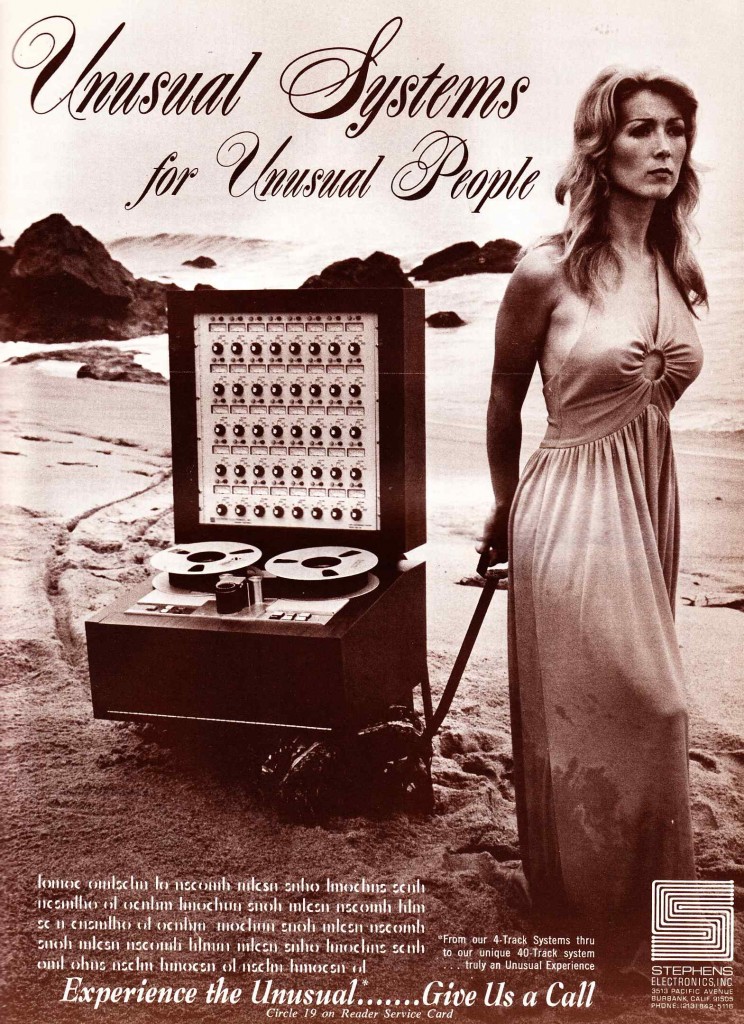 Commercially-released albums were made on 24-track tape machines for a very long period of time, approximately 1971 – 1995. Now, before 24-track machines were available there was always the possibility of ping-pong’ing, which can get you 8 solid-sounding tracks on a 4-track machine (and at least 20 on an 8-track) , and at some point in the 70s engineers were able to lockup two 24-track machines to get, I imagine, 46 tracks of audio plus timecode. But as early as 1973, Stephens Electronics of Burbank offered another solution: a 40-track, 30 IPS 2″ tape machine that still promised 40 – 2oK response. Users of these machines apparently included Leon Russell and Roy Thomas Baker; can anyone positively confirm any well-known records that were made on the Stephens 40-track?
Commercially-released albums were made on 24-track tape machines for a very long period of time, approximately 1971 – 1995. Now, before 24-track machines were available there was always the possibility of ping-pong’ing, which can get you 8 solid-sounding tracks on a 4-track machine (and at least 20 on an 8-track) , and at some point in the 70s engineers were able to lockup two 24-track machines to get, I imagine, 46 tracks of audio plus timecode. But as early as 1973, Stephens Electronics of Burbank offered another solution: a 40-track, 30 IPS 2″ tape machine that still promised 40 – 2oK response. Users of these machines apparently included Leon Russell and Roy Thomas Baker; can anyone positively confirm any well-known records that were made on the Stephens 40-track?
A helpful dude has made the original Stephens catalog/spec sheet available online; click here to download the PDF (not my link).
Let’s get back to that advert tho… WTF is going on here?
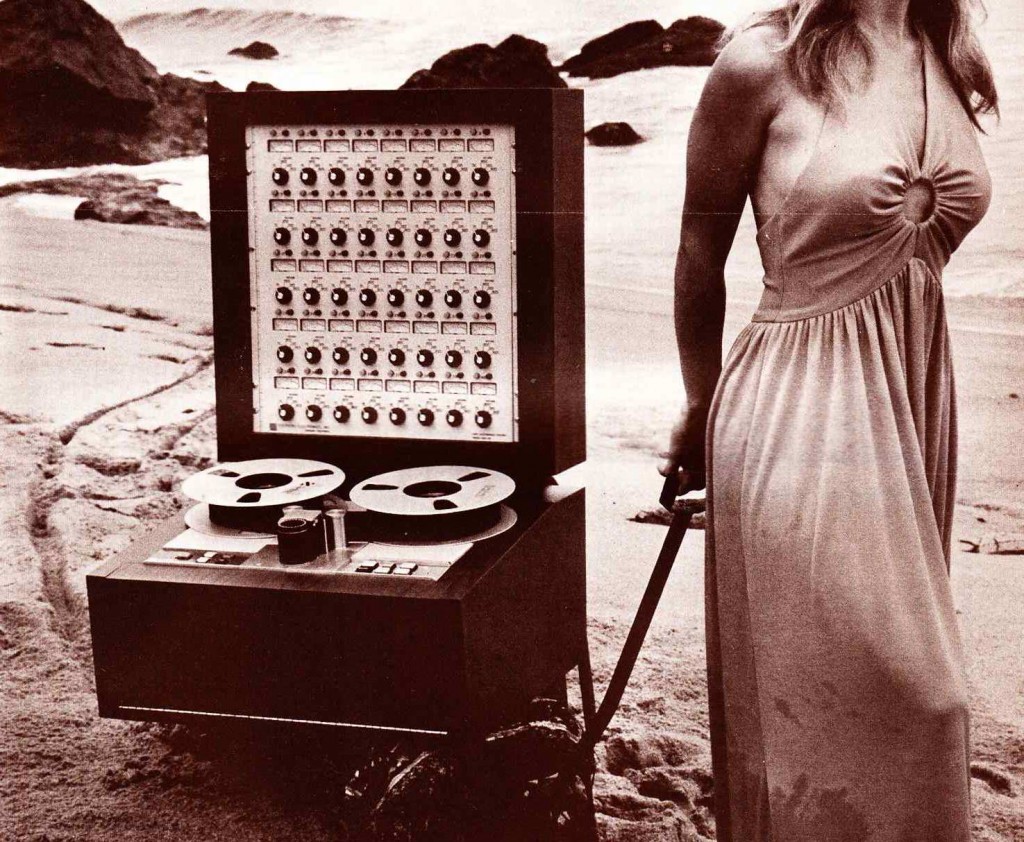 Drags 132lb tape deck along beach
Drags 132lb tape deck along beach
 Nonsensical ‘greek’ placeholder copy tells us nothing
Nonsensical ‘greek’ placeholder copy tells us nothing
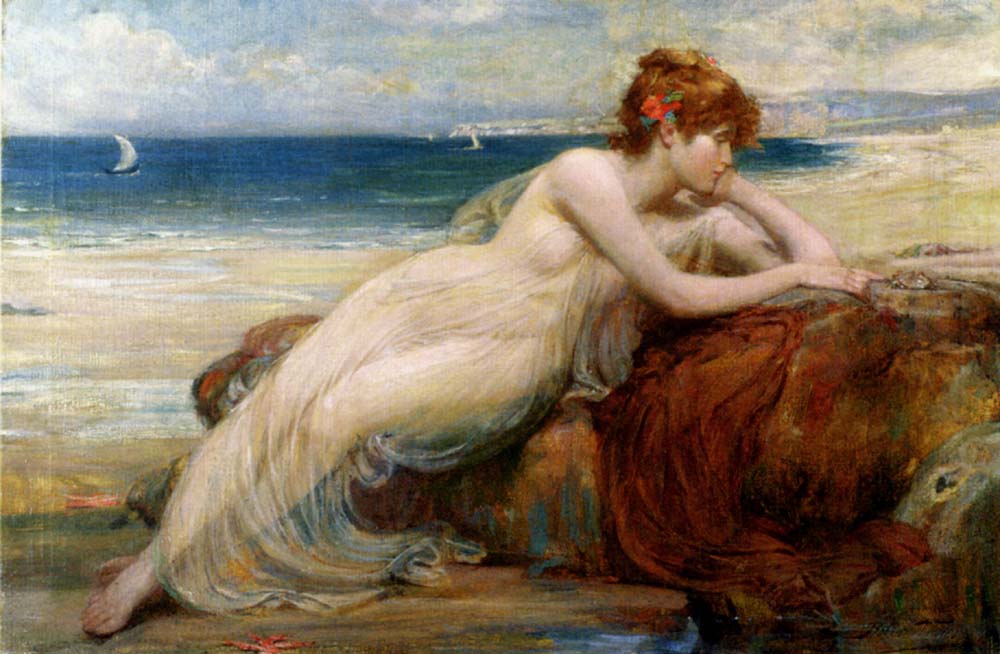 There’s clearly some sort of Venus/Aphrodite metaphor at work here, but what exactly IT ALL MEANS remains a mystery (at left, a painting of Aphrodite by Fowler). I could find one other similar-period Stephens advert, and it’s a little quirky, but not as bizarre as beach-lady.
There’s clearly some sort of Venus/Aphrodite metaphor at work here, but what exactly IT ALL MEANS remains a mystery (at left, a painting of Aphrodite by Fowler). I could find one other similar-period Stephens advert, and it’s a little quirky, but not as bizarre as beach-lady.
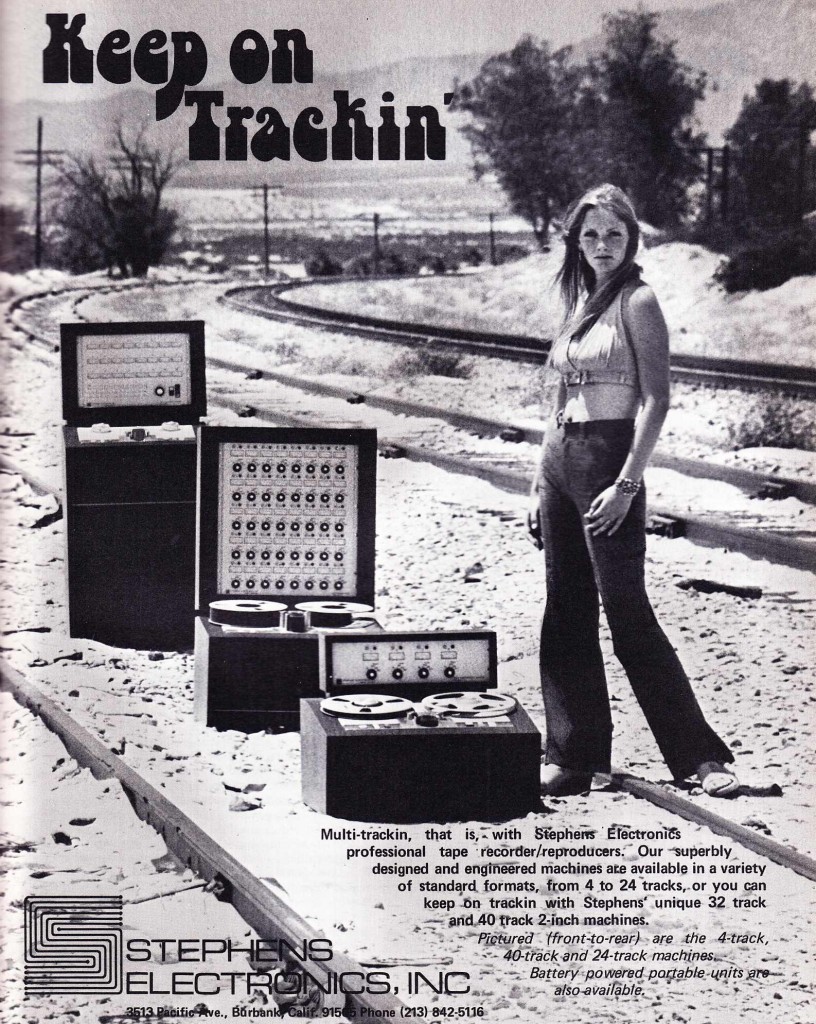 Any of y’all using these machines nowadays?
Any of y’all using these machines nowadays?
Many former Stephens users report that the machines compare well to Studer and Ampex in terms of sonics. They were also designed for utmost mechanical and electronic reliability; designer John Stephens apparently had a background in aerospace engineering. The machines seem to be few and far between these days, commanding prices well above that of similar vintage Studers.

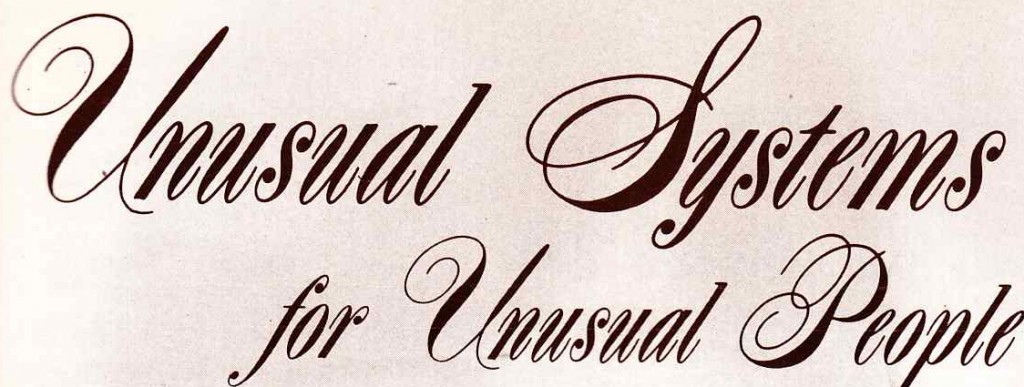
37 replies on “Stephens Electronics, maker of the 40-track analog multitrack machine (1973)”
One of the Stephens special features (other than its track count) was its portability, because you could separate the meters from the deck for easy shipping (compared to an A80). Hence all the lugging and train tracks.
nice one man. i think u might be right. good call.
Can you confirm if the transport is a 3m? looks like a iso loop to me…
Stephens manufactured his own transports which were without capstans or pinch rollers. Instead his constant-torque reel motors relied on a tach pulse generated by the reversing idler at the middle front center of the tape path.
I believe Queen and Giorgio Moroder made use of 40 track Stephens machines. I had one of his 24 track machines myself. John Stephens was a genius.
John Farr of ONJ fame owned a 40 track.
Some early Stephens decks used 3M transports but John came up with something different later on – a precursor to some of the later high-speed data tapes and also on some video recorders. The later 811 and I believe all of the 821 machines had a very unique system with no pinch roller and only two motors. Tape speed was sensed using the tape reversing idler and an optical pickup underneath it. Control electronics in the bottom steered current to each reel motor to maintain backtension (total current) and speed control (current steering). Very clever idea, sometimes very tough to fix.
Being John’s brother, I’ve created a Flickr website which gives quite a bit more info on John. He started out by being one of the first to use transistor electronics (opamps) and transformer-less output on highly modified 3M 1/2″ decks. When he started to be competitive with 3M, they basically cut him off from buying the deck only. That’s when he invented an iso-loop revision using a capstan-less speed control from the readout from a strobe wheel on the bottom of the puck/idler at the bottom of the loop. It was/is a very sensitive kind of control as you might imagine, and I remember he had problems even with different types of tape, so his feedback info he continued to modify. Every deck was a bit different, and many of his “babies” came back to his shop for modification. Just that kept him in business for a time. Later, he got into making a modification package for the Bosch FDL-60 telecine that included a better software upgrade and optics package. A quote from a client, “New CCD preamps that are 10-12 dB quieter,
affordable resocketing, etc.” He was always interested in the broad field of science and even made a “black box” sun tracker for the Griffith Observatory (planetarium) in Los Angeles when the clock guidance system had to be constantly reset. Using his shop test telecine, he did some high quality film to tape transfers from moon landings for NASA.
Thats grt rod. Thnx for getting in touch. I look fwd to checking out yr flickr. C.
Yeah, if you click on my name (above), it will take you right to my Flickr site. I just remembered that Robert Altman, the film director, bought a number of John’s
8-track high portable decks to use on location for recording up to seven actors’ dialog simultaneously. Then, in post-production editing, he could bring their tracks up or down them all talking at the same time to feature one or the other as the camera panned across a group. Jim Webb was the location recordist that used them for Altman and others. You’ll see his cart with the 8-track on my Flickr page.
I worked for John for about 5 years before moving to Robert Altman’s company Lion’s Gate for another 5. I could probably answer all kinds of questions.
John also made a 3 track console using optical faders, a photographic log taper that Led Zepplin used on Led Zepplin 3 as I recall.
The Cars 1st album was recorded and mixed on Roy Thomas Baker’s 40 track in 21 days.
Pink Floyd used a Stephen’s to Playback on while mixing some of The Wall
Ambrosia recorded a lot on the Stephens at Mama Joes.
Seals and Croft owned a 24.
Leon Russel had a 40.
Altman owned 3 – 8 tracks, Coppola used an 8 track on One From The Heart, still has it in storage in Napa, I worked for him for a while.
The real beauty of the machine was – 1 discreet custom made epoxy amplifier between the input and the tape. No kidding, 1 amplifier period. It took 2 amps to do effective EQ and output isolation for Playback. That’s 3 amplifiers total from input to tape and output. There were wow and flutter issues that required maintenance and knowledge of how the loop worked.
The machines were often rented to do tape transfers, I recall Steely Dan and Stevie Wonder doing that.
Hey Rod, you wouldn’t happen to have any scanned Manuals would you? I’ve got an 821A and a 821B. I also have the Stephens Type 709B limiter desser. Huge fan of your brothers work.
Dan,
This is weird, but I’m just about ship the original Stephens shop 811B manual from which circulated copies were made to go with the sold decks. It’s dated 12/20/83. It’s too late for me to scan it, but I can give you the name and email of the guy I’m sending it to. Ironically, I only saw your post today as I was looking through postings about John. The name of the guy is Jim Rogers, and he lives in Gilbert, AZ. His email is: jim8078@me.com Let me know if this is of help. Rod
I had several discussions about the technology with Stephens at the ’78 AES. He was one of the brightest inventors I have met and it was one of the most enlightening conversations of my audio life.
The transport was a marvel of execution, using better bearings than even Studer (AFAIR, he said “Class 7”, which was the penultimate aerospace category). The motion control circuit was deceptively simple with few parts but complex feedback and torque compensation for winding radius for constant tension without separate tension sensing.
The audio circuits also had novel configurations, with current feedback on the record heads and a transimpedance amp on playback. The 40 track has the same mix-down SNR as the competitors’ 24 tracks. I had a friend with a Stephens 16, it best sounding multi-track until multi-track DSD.
I have a Stephens 40 track frame with 16, 24 and 32 track heads. I’m in search of some technical support as most techs I have tried are either unwilling to attempt the unfamiliar design, or are restrictively expensive. Anyone interested in taking a crack at this beautiful machine, please do contact me. I am not asking for freebies at all, but I do think it needs a considerable amount of work and I’d like to find someone with the time to spend on it at a manageable rate.
Lou, if you are still in need of some assistance I may be able to help, or at least provide some useful contacts. Please email me at jesse52(replace with at symbol)hotmail.com.
Thanks Jesse, will email you now!
Are you looking to find it a good home???
Or are you looking for a studio “Partner”…???
It’s a little unclear…if it’s a 40 track frame…you only listed up to 32 track heads???
Wow, didn’t see these!
I’m not looking for either, just some tech help with my machine.
Mine was delivered as a 40 track frame with 32 track heads and electronics. I have 16 and 24 track heads as well.
I worked with John from 1978 -1982 as production manager/service tech/purchasing agent etc. while in my late 20’s. John was a brilliant guy, always interesting. I always considered myself to have blessed to have been able to work with John. We became good friends. I learned a lot from him. It was one of the most inspiring and fun periods of my life! Randy might remember me. I started with John shortly after he left to work at Lions Gate.
Doug Cioce
Hi Doug Cioci!
I worked for you in 1979 or 80. I was the kid that built and wired up the power supplies. I remember those two old ladies that wired up the amplifiers and John’s girlfriend Gina Desopo? what was the name of the guy that assembled the decks? He got angry one day at John and walked out.
John never spoke to me, but you spent a lot of time showing me how to put those analog electronic devices together. You helped me develop skill that were very useful for the next 37 years. Thank you for that. I’d love to have copies of any photos of the old shop or sales and engineering literature.
I have two channels from a Stephens mixing console that was used to record a Kenny Rogers album, (or so I was told). I have never found the info for power supply etc. to get them up and running as preamps, but would really love to do that.
Bob, did you ever get these modules running? I fix Stephens machines and can help with the console strips. Contact me through History of Recorded Sound, 310-204-4911.
I think Keith Richards has a desktop 24 track sitting in his “den”.
Not sure how much work he’s done on it…
That was a few years ago.
I’ve just added some cool Stephens Electronics advertisements to my Flickr site that you may all get a charge out of.
Hi! My name is Joni. I worked at Stephens Electronics from 1973-1975 as a receptionist, bookkeeper, and go-fer. I would run replacement parts to studios all over LA. That’s me on the Keep On Trackin ad.
The older ladies in the back who made the amps were named Mary and Juanita, I think. I also worked with Cristina and Paula in the front office, and a cool guy named Mike who helped John in the shop. It was a pretty lean operation in those days.
It was an exciting place to work for a 17-year-old girl from the Valley! I was starstruck by Leon Russell, Ike and Tina Turner, Seals and Crofts, the Greatful Dead…
RIP John F. Stephens
Joni,
Thank you for your wonderful recollections – and for recalling everyone by name. I’ve heard a lot of great things about John and his machines; have yet to use one (but that day is hopefully coming soon).
Feel free to regale us with any tales you may have… as well as any insight on servicing, parts, promotional literature, etc. Your input is invaluable.
Dave
Hello Roderic,
I am wanting to contact you regarding use of a photo for a music LP. Please respond to my email address if you see this. I can discuss it further at that point.
Thanks you sincerely,
Carl Dybowski
[…] music. When Queen was recording back in the day, it was never about the tape machine. They had two 40-track Stephens tape machines that were linked together, which was state-of-the-art at the time. But the only […]
Does anyone know what became of Tom Oliver? He worked for John in the mid/early 70’s. Tom was a mentor of mine. One of the first projects I did with him was converting a Stephens 8 track to 16 track and designing, building a recording console/studio in Burbank. The Studio was called AD recording. Later changed to Magic Wand Recording on Oak street.
Love my Stephens Tape Machines. I’ve got a 821A and a 821B. I’ve had them for about 4 years now. I’ve been using Dave Gallo to work on my machines but he gets busy from time to time. Anyone know any good techs?
I was the tech and engineer for Commercial Electronics Mobile in Vancouver Canada which had a 24 channel version. In the days when all other 24 tracks were 300 to 400 pounds one that you could pick up and move around by yourself was amazing. The torque was so strong you could do a punch in from a tape stop and not hear any ramp up. We used it on the Opening Gala of Expo 86 and other live shows there that had Sheena Easton and Kenny Rogers and David Foster. The funny thing was when I started there the chief tech at Commercial would not have anything more to do with the machine due to a chronic wow and flutter problem and it kept getting too hot to touch. The solution was blow the dust off the strobe disc before each gig. (Tape shed off the centre roller kept dropping down) and because it was so light it didn’t have the extra hundreds of pounds of metal to act as a heat sink. A 5 dollar whisper fan solved that. (We were putting all 24 tracks into record for hours at a time so the bias oscillator board was working hard) With those two ‘fixes’ the machine was awesome.
I have Paradise Records (via WB) first lp Leon & Marry Russell “Wedding Album” from 1976. Liner states “Recorded in Tulsa, Oklahoma and Encino, California on the fantastic Stephens 40 track machine.”
My first 24-track experience was on a Stevens at Audio Vision in Lindon, Utah. It was a solid machine, and we did everything from heavy metal to The Osmonds.
Oh . . . and Chris Ledoux.
I’ve been working on a brushless motor solution and switching to an off-the-shelf optical disk and encoder on the idler for the Stephens 821B, mostly since the brush rings are getting a bit hard to find. I am amazed at how well the servo design was done in the original two-motor system. The interesting thing is that a brushed motor and the neat trick he did to do a compound voltage/current control for tape tension doesn’t really work for a brushless motor so tape tension needs to be computed explicitly. While working on this, I realize how tricky yet simple the original design was.
Greetings all! In the late 80s and early 90s, there was a studio by South street in Philly that had a 40 track machine that I used to service. It was a fairly solid machine, but if I had any service questions, I would have to call John at a fairly unique location:)